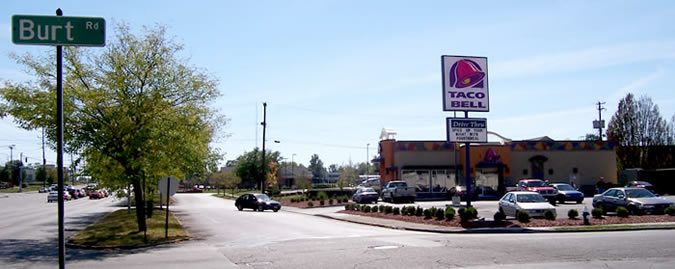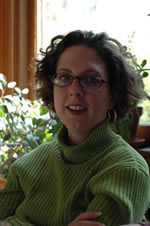An Urban Ethnography
Liminalities: A Journal of Performance Studies 4.1 (2008)
ISSN 1557-2935
Renee Human
University of Kentucky
Methods, Protocol and LogisticS
LexTran’s Blue Route #3 runs through the heart of Lexington, Kentucky, from the predominantly lower socio-economic inner-city of Russell Cave Road (3N) through to the downtown transit center on to the affluent shopping areas and suburbia on the south side of Lexington bordering Nicholasville Road (3S) and back again. The area is also covered by Route #2 (2S), which originates at the downtown transit center, passes the mega-churches and large residences of Tates Creek Road, then crosses to Nicholasville Road on the south side of the city.
The trip is repeated every hour and a half, three buses run the route thirty minutes apart during business hours and an hour apart in the evenings. According to LexTran, in a city of approximately 250,000, more than 10,000 people ride the bus daily with nearly twenty percent of those riders on Routes #3S, 3N and 2S. Eighty-six percent of these individuals ride the bus three to five times a week, while fifty-six percent ride daily (RLS & Associates 7).
 These are the routes that I take daily Monday through Friday to travel from near my home on the southern “suburbia” side of Lexington to the University of Kentucky downtown. For more than a year, I have been mapping the bus. I created a drawing using Adobe Illustrator and printed out multiple copies, which I keep in a thin black binder. I have also been making notes in the field or in my parked car immediately after the bus ride on the same pages.
These are the routes that I take daily Monday through Friday to travel from near my home on the southern “suburbia” side of Lexington to the University of Kentucky downtown. For more than a year, I have been mapping the bus. I created a drawing using Adobe Illustrator and printed out multiple copies, which I keep in a thin black binder. I have also been making notes in the field or in my parked car immediately after the bus ride on the same pages.
Continued observation in the role of participant-observer was warranted to note both the silences and conversations on the bus.
This method of data collection is necessary to help identify when the bus experience appears to be individualistic and when it is collective. Because no one individual is identified and any behavoir cited is public, informed consent was not solicited (Lindlof and Taylor 94).
Short, unstructured interviews were also conducted at the downtown transit center, on the bus and at random bus stops. These interviews ranged in length from very brief conversations to approximately 10 minutes. A variety of questions were posed.
The interviews at the bus stops and the transit station primarily sought to inform the first research question in determining how subjects negotiated their roles as individuals within the collective setting of the bus and how that translates into silence or conversation. The interviews on the bus began with these same questions but also included question regarding Benjamin’s creative memory of place and the second research question. My hope was that riding past places that have individual meaning would spark just such reflections. Additional questions were occasionally posed to follow up on how subjects handle these memories particularly in their role of rider and if it further inhibits or stimulates communication with other riders.
Miscellaneous documents, such as the LexTran Comprehensive Operational Analysis, Final Report were used as artifacts to inform maximum variation sampling. The Report details a breakdown of riders in terms of ethnicity, age, routes and ridership purpose, which I consulted to help identify a variety of subjects matching these characteristics. Typical sampling was also employed as subjects were conveniently questioned at bus stops, on the bus or at the transit center. Interviews were also conducted at a variety of times to avoid sampling only riders of singular purpose (e.g., rush hour commuters).
The Addition of Multimedia
It wasn't until approximately halfway through the project that it occurred to me to present this project in a format other than as the typical formalized paper favored by academe. But the project dictated more; namely, visuals. Subsequently, I began to photograph places, people and events. The idea of a website soon unfolded – the logical fit of text and graphics in a non-linear presentation.
Unfortunately, two issues surfaced. First, since I began to take photographs so late in the process, I missed several key opportunities for documentation. For example, in the discussion, the demolition of an old Taco Bell to make room for a new Taco Bell is mentioned. I only have photos of the finished, new building.
 The second issue related to photographing people in a natural environment. Taking a photo on the bus is an out-of-place act that could put people on guard and yielded a few looks of wary mistrust (Lindlof and Taylor 116). On the flip side, asking to take a subject’s photo was awkward, and, if that person agreed, the resulting photo hinted at posed phoniness. As a result, I learned to use my cell phone camera while pretending to mess with the display. I also often carried a small digital camera which I would set to “no flash or sound” and whip out of my bag – snap! – and shove back in before anyone noticed. Some of these photos turned out, some are a blur and others are shot at strange angles. Many photos defy identification on any level. And on many split-second incidences, I just couldn’t get the shot fast enough and the moment passed. Mostly, the photos were taken to aid my personal recall and to gain another opportunity to "view" the scene. However, some photos displayed on this site are identifiable, and, as such are used to record public life in public space.
The second issue related to photographing people in a natural environment. Taking a photo on the bus is an out-of-place act that could put people on guard and yielded a few looks of wary mistrust (Lindlof and Taylor 116). On the flip side, asking to take a subject’s photo was awkward, and, if that person agreed, the resulting photo hinted at posed phoniness. As a result, I learned to use my cell phone camera while pretending to mess with the display. I also often carried a small digital camera which I would set to “no flash or sound” and whip out of my bag – snap! – and shove back in before anyone noticed. Some of these photos turned out, some are a blur and others are shot at strange angles. Many photos defy identification on any level. And on many split-second incidences, I just couldn’t get the shot fast enough and the moment passed. Mostly, the photos were taken to aid my personal recall and to gain another opportunity to "view" the scene. However, some photos displayed on this site are identifiable, and, as such are used to record public life in public space.
A personal note on these methods
 Possessing extensive interview experience from a previous career as a feature writer, I also knew how to beflexible, how to listen, how to grab onto that one little comment that someone occasionally threw out half-heartedly and “ran with it.” I’m also very non-threatening and friendly – a five-foot-even tall mommy-type female that likes to smile and can talk to anyone. I used this to my advantage to pinpoint and persuade subjects to answer questions and share. The last piece of my methods: I tried to relax and enjoy the experience even when the pieces didn’t fall into place.
Possessing extensive interview experience from a previous career as a feature writer, I also knew how to beflexible, how to listen, how to grab onto that one little comment that someone occasionally threw out half-heartedly and “ran with it.” I’m also very non-threatening and friendly – a five-foot-even tall mommy-type female that likes to smile and can talk to anyone. I used this to my advantage to pinpoint and persuade subjects to answer questions and share. The last piece of my methods: I tried to relax and enjoy the experience even when the pieces didn’t fall into place.
